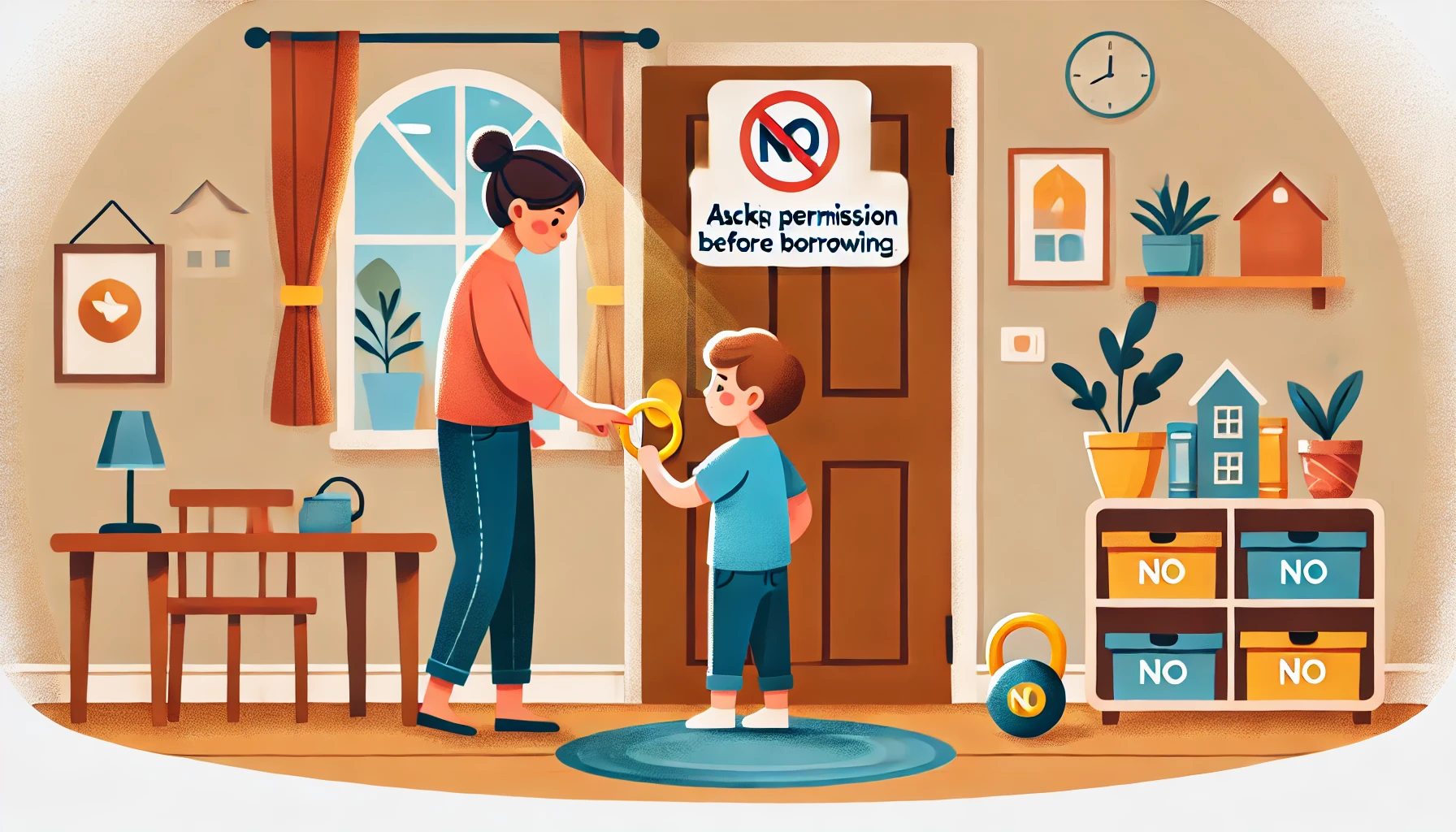How to Teach Young Children About Setting Boundaries and Respecting Others’ Privacy
Teaching young children about personal boundaries and privacy helps them develop respect for themselves and others. When kids learn to communicate their needs, recognize others’ limits, and understand the importance of privacy, they build healthy relationships and social awareness. Parents can introduce these concepts through role-playing, clear explanations, and daily practice. In this article, we’ll explore practical ways to help children understand and respect boundaries.
Why Teaching Boundaries is Important
- Encourages respect for personal space – Helps children understand that everyone has limits.
- Builds self-awareness – Teaches kids to recognize and express their own comfort levels.
- Develops empathy – Helps children understand that others have different needs.
- Prepares for healthy social interactions – Encourages respectful friendships and relationships.
- Teaches safety and consent – Helps kids learn when to ask for permission and when to say no.
1. Explain What Boundaries Are in Simple Terms
Children need to understand what boundaries mean before they can practice them.
Activity Idea:
- Use simple explanations: “Boundaries are like invisible lines that help people feel safe and comfortable.”
- Give examples: “Just like we knock before entering a room, we ask before hugging someone.”
- Use visual aids like circles drawn on paper to show different personal spaces (self, family, friends, strangers).
What Kids Learn:
- That boundaries help everyone feel respected.
- How to recognize when someone needs personal space.
- That they also have the right to set their own boundaries.
2. Teach Kids to Ask for Permission
Helping children understand when to ask before touching or using something teaches respect.
Activity Idea:
- Role-play scenarios: “What do you say before borrowing your friend’s toy?”
- Encourage asking before giving hugs: “Would you like a hug?” instead of assuming.
- Use a stop-and-go game, where kids ask before crossing a “boundary line.”
What Kids Learn:
- That asking first shows respect for others.
- How to recognize when someone might not want to share.
- The importance of consent in everyday situations.
3. Set Clear Rules for Personal Space
Helping kids understand when and where personal space matters creates consistency.
Activity Idea:
- Create a Personal Space Chart with rules like “Knock before entering a room” and “Keep hands to yourself.”
- Use a hula hoop to visually demonstrate personal space.
- Praise kids when they respect personal space: “Great job waiting for your turn to talk!”
What Kids Learn:
- That respecting space helps everyone feel comfortable.
- How to recognize when someone needs space.
- Why personal space is different in different situations.
4. Teach That “No” and “Stop” Should Be Respected
Children need to learn that when someone says “no” or “stop,” it should be respected immediately.
Activity Idea:
- Practice a “Stop Game”, where kids freeze when someone says “stop.”
- Teach kids to say “No, thank you” when they don’t want to do something.
- Reinforce the idea that they, too, can say no when they feel uncomfortable.
What Kids Learn:
- That they should listen when someone sets a boundary.
- How to express their own boundaries confidently.
- The importance of stopping when asked.
5. Teach the Concept of Privacy in Everyday Situations
Helping children understand privacy helps them develop respect for personal boundaries.
Activity Idea:
- Explain bathroom privacy: “We close the door because using the bathroom is private.”
- Talk about changing clothes in private spaces, like bedrooms or bathrooms.
- Teach that other people’s belongings (bags, journals) should not be touched without permission.
What Kids Learn:
- That some things are meant to be private.
- How to respect others’ privacy in different settings.
- The importance of knocking and asking before entering rooms.
6. Read Books About Boundaries and Respect
Books provide relatable examples of personal space and respecting privacy.
Activity Idea:
- Read Personal Space Camp by Julia Cook (teaches personal boundaries).
- Ask, “How did the character show respect for others?”
- Discuss how the story relates to real-life situations.
What Kids Learn:
- That respecting space and privacy helps people feel safe.
- How setting boundaries helps build positive relationships.
- The importance of understanding and respecting different comfort levels.
7. Encourage Kids to Express Their Own Boundaries
Teaching children that they have the right to set boundaries builds confidence and self-respect.
Activity Idea:
- Practice saying “I don’t like that” or “Please give me space” in different situations.
- Encourage kids to let others know when they need personal space.
- Reinforce that it’s okay to say no if they feel uncomfortable.
What Kids Learn:
- That their feelings and comfort levels matter.
- How to set and express their own boundaries.
- That saying “no” is a valid choice when they feel uncomfortable.
8. Praise and Reinforce Respectful Behavior
Recognizing when children respect boundaries encourages them to continue the habit.
Activity Idea:
- Say, “I love how you asked before taking your sister’s book!”
- Use a “Respect Chart”, where kids earn stars for showing respect for space and privacy.
- Ask, “How did it feel when your friend respected your space?” to reinforce self-awareness.
What Kids Learn:
- That respecting boundaries is an important life skill.
- How their actions affect others positively.
- The motivation to continue practicing respect.
Final Thoughts
Teaching young children about setting boundaries and respecting others’ privacy helps them build respectful, healthy relationships. By modeling respect, encouraging open communication, and reinforcing good habits, parents can help children understand that everyone deserves personal space and that boundaries are essential for kindness and mutual respect.
